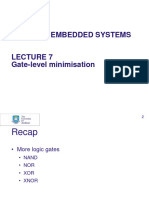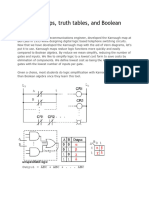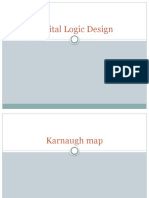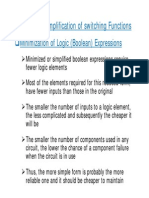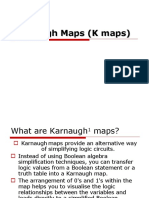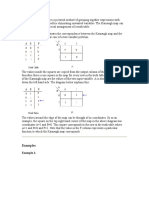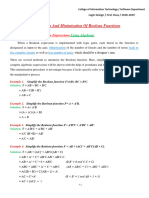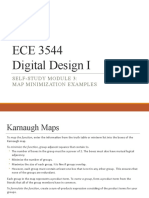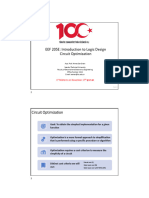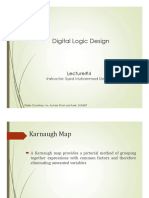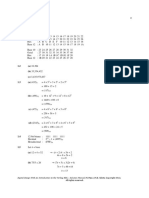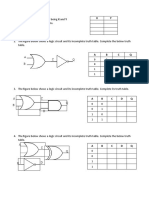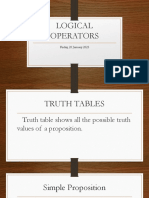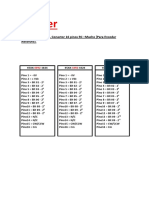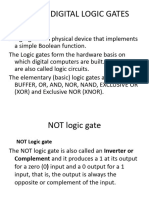0% found this document useful (0 votes)
49 views40 pagesChapter 1 Minimization of Circuits
The document discusses the Karnaugh Map method for minimizing combination circuits based on truth tables and standard Sum of Products (SOP). It outlines the process of constructing a Karnaugh map, identifying adjacent minterms, and provides an algorithm for simplification. The document includes examples and tables for visual representation of Boolean expressions with 2, 3, and 4 variables.
Uploaded by
kisamobraysonCopyright
© © All Rights Reserved
We take content rights seriously. If you suspect this is your content, claim it here.
Available Formats
Download as PDF, TXT or read online on Scribd
0% found this document useful (0 votes)
49 views40 pagesChapter 1 Minimization of Circuits
The document discusses the Karnaugh Map method for minimizing combination circuits based on truth tables and standard Sum of Products (SOP). It outlines the process of constructing a Karnaugh map, identifying adjacent minterms, and provides an algorithm for simplification. The document includes examples and tables for visual representation of Boolean expressions with 2, 3, and 4 variables.
Uploaded by
kisamobraysonCopyright
© © All Rights Reserved
We take content rights seriously. If you suspect this is your content, claim it here.
Available Formats
Download as PDF, TXT or read online on Scribd
/ 40





